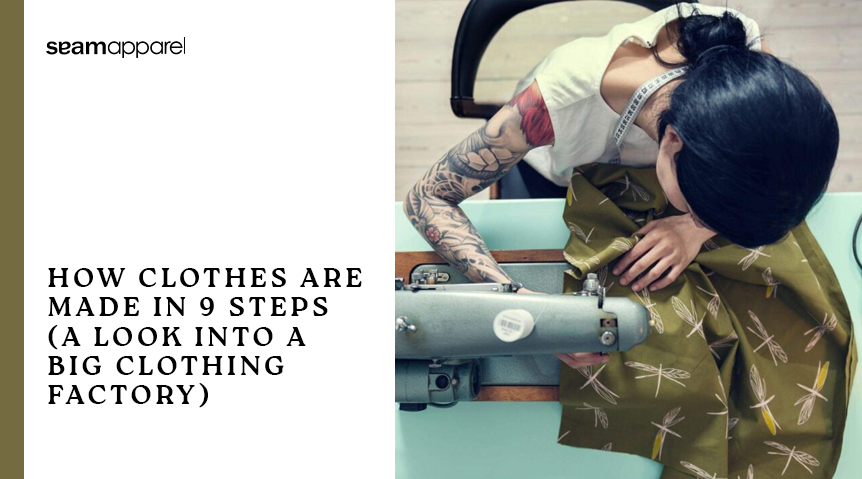There are many different types of materials used to make clothing today. Even today, plants and animals are still used to produce traditional materials like cotton, linen, and leather. But it’s more likely that the majority of clothing is made from substances and chemicals derived from crude oil made from fossil fuels.
We can sort out some concerns and explain why it frequently requires a lot of communication, samples, and time how to manufacture clothing. Let’s define the process for you if you are new to the world of clothes production so that you are better equipped on how to start a clothing line and collaborate with clothing manufacturers.
How Clothes Are Made Step By Step?
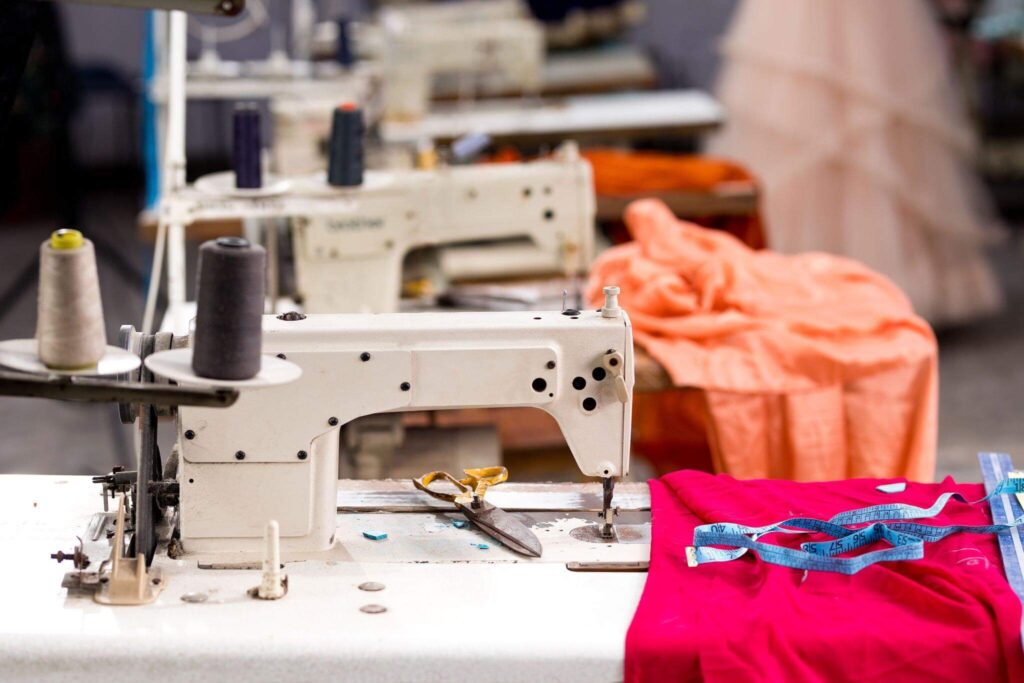

Production of clothing is a planned operation that includes a series of steps including clothing pattern design, layout marking, cutting, stitching, checking, finishing, pressing, and packaging. Raw resources are transformed into finished goods through this process. If the material preparation step during the preproduction stage is not correctly carried out, it would be difficult to maintain the industry even if the mass production of clothing is up to standard.
Patterns
The clothing manufacturing process pointed out that paper patterns would need to be converted to digital format because using paper patterns alone makes digitizing impossible for sampling and proper production of clothes. Sewing patterns stored in a file rather than on paper only makes sense in today’s digital age.
Paper patterns were used by the manufacturer’s pattern maker, who placed them on a sizable board known as the digitizer. In our situation, the manufacturer used the Assyst software, which enabled the pattern creator to import the paper patterns into their system. The hand-held gadget that took pictures of the location of the pattern for each dot was moved around each piece of the pattern.
They went all the way around the pattern piece until they had gathered all the data and our pattern had appeared in their program. Given that some clothing has tens of panels, this process takes a long time.
Classifying The Patterns After Digitization
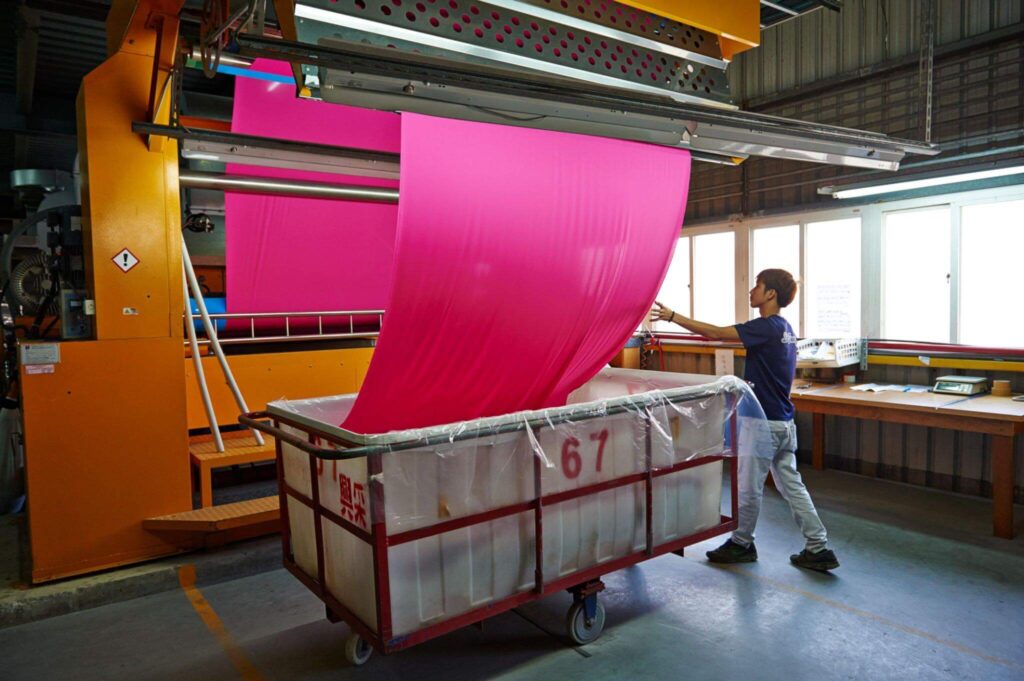

The pattern maker saw there were a few rough edges and minor flaws, but now that the design was in their system, they could be readily changed and repaired. When using digital patterns, the pattern maker can make adjustments and changes with extreme precision. Real-time tracking and visualization of all measurement adjustments. By the way, if we were to approve the samples that were produced, the same set of designs would be utilized subsequently to grade to additional sizes. The same program is used for size grading.
Layout: Making Production-Ready Patterns
Next, using a plotter, the patterns were printed out. To achieve this, the factory expert had to develop a proper lay plan, which required organizing all pattern blocks in a predetermined order (in our case, sampling) while taking into account variables like fabric length, roll width, the total number of products to be manufactured, and a breakdown of sizes.
It was completed fast since their system now recognized patterns. The lay-plan program then recommended the ideal arrangement of these geometric forms (patterns) based on the quantity and other factors to maximize the use of the fabric and minimize fabric wastage. There was still room for improvement even though the software handled this fairly well.
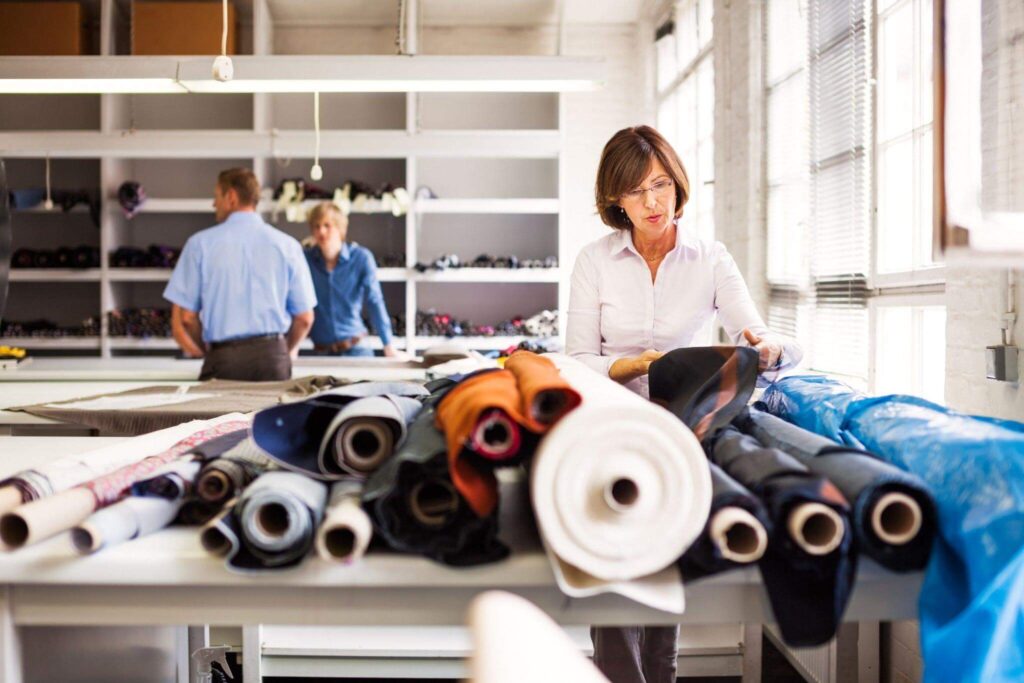

This could be identified by a competent specialist, like the one we had, who could also enhance the layout recommended by the expert software. Up until the factory expert knew the layout was flawless, it was moved around. And informed that a good clothing fabric use efficiency is between 70 and 80%. The efficiency will always be higher with a wider range of sizes and a larger number of smaller pattern part details being produced.
It is important to keep in mind that the amount of fabric needed for a sample and how clothes are mass-produced of the same item can vary significantly. When you play the classic, you stack the shapes while attempting to avoid the blanks and empty spaces.
Fabric Cutting
Workers were ready to cut cloth once the plotter printed out patterns from the pre-compiled lay plan. When the cutting was done, nothing would slide because the patterns were printed on specialized paper that adhered to the fabric flawlessly. As the cutting process got underway, we observed that the coarser portions were first trimmed with specialized tools, but the first portion was done manually with scissors.
According to what was explained, clothing samples are frequently trimmed manually while the procedure is slightly different for how to mass-produce clothing. Similar fabric products are cut in large quantities and stacked on top of one another like a cake. The fabric’s composition and thickness decide whether or not it can be cut into pieces, the clothing producer informed us. One cannot simultaneously cut cotton and viscose, for instance.
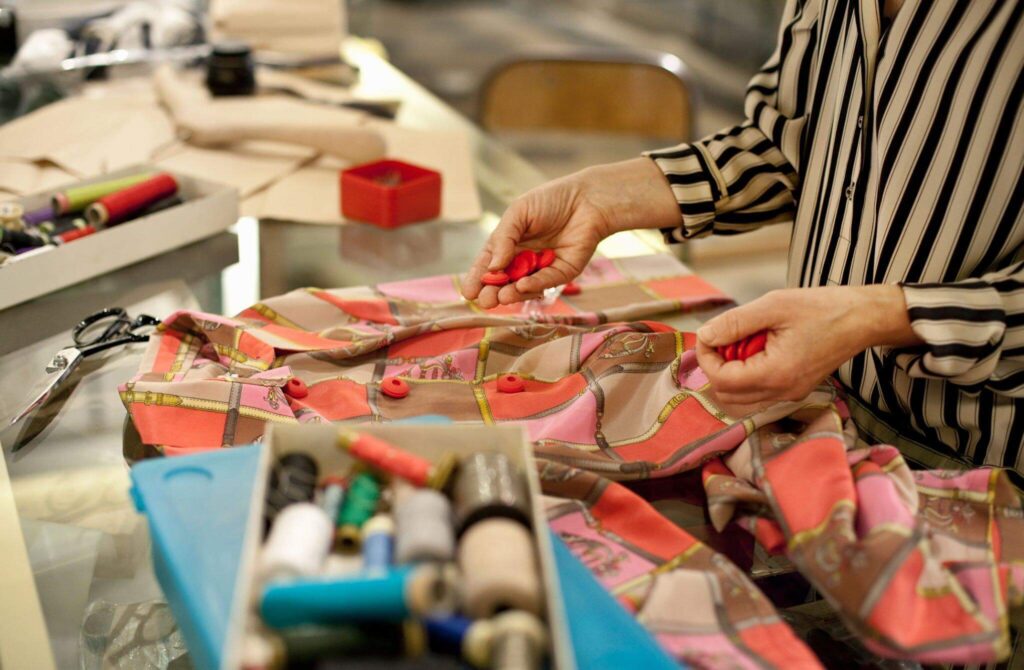

The result will be inconsistent since different textiles react to cutting differently and can distort more than others. Due to this, a second cutting job is required even in cases where there is a 1% compositional difference. When we turned to look, we found a lot of layered fabric that was already cut and prepared.
Putting Together Settings For The Weavers
After the cutting was finished, all of the pieces were assembled in sets. Similar tasks were put together to speed up the production of clothing so workers may progressively gain speed while performing the same task repeatedly. Consider how you brush your teeth each day. You’ve undoubtedly mastered a method that has increased your effectiveness by this point.
Colors and Trims
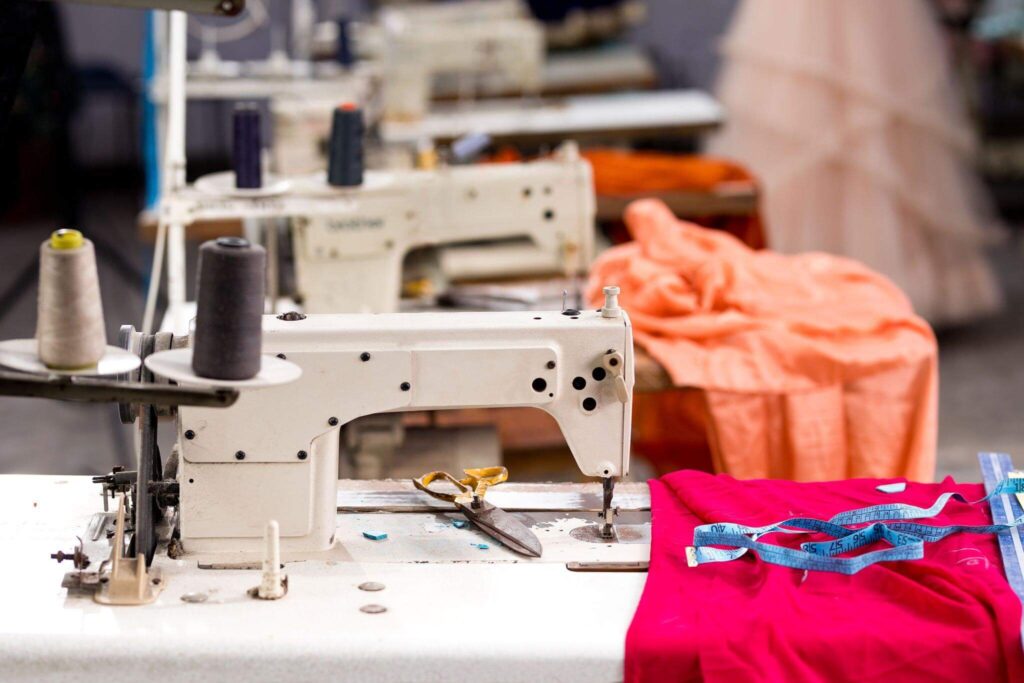

We had to choose the appropriate thread color for the production stage so that it would match the color of the fabric. We eventually found the colors that matched each other the best. There were many choices available to us. Even though we haven’t seen all the shades, some had barely discernible differences.
Except for elastics, these garments did not require trims, but we did notice that the fabric offered a wide variety of zips, buttons, and other accessories.
Adjusting The Equipment
Once specialists prepare to begin sampling they have to set up cut fabric pieces, but first, need to make some adjustments to the machinery. For a particular kind of cloth, every sewing machine needs to be adjusted. Then started unloading the old threads and inserting the fresh spools for our sample pieces in the shade we selected. Six reels of thread in the same color as our outfit were taken by the seamstress and put in the flat-lock sewing machine. Once the tension is set and adjusted, test the seam on a piece of fabric.
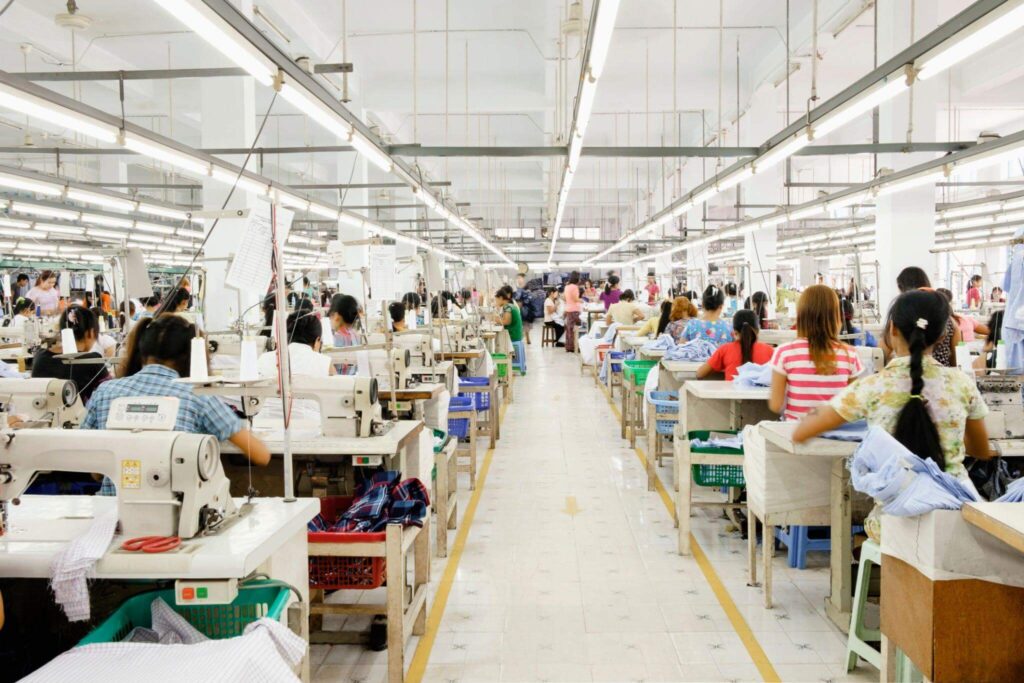

Sewing
We finally started to see our concept come to life as laid out the set and pieced it together after making sure everything was adjusted properly. It was a thrilling time!
Finishing
As soon as the products were finished, we brought them to the sampling unit to compare the measurements to our specifications. Everything appeared to be in order, and following a careful review of the samples, we cleared them for grading and moved on to talking about the next bulk clothing manufacturing order.

